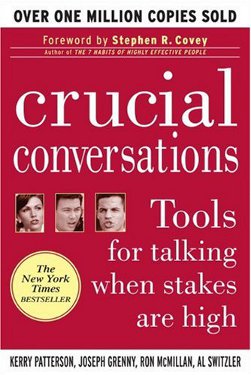I had commented on Mozilla’s new “rapid release process” before the PR storm, but it in tweet form, so I figured I’d expound on it a bit.
A lot of the focus has been on Dave Winer’s post (and his followup). His post has been tarred as “incomprehensible” by some1.
I tweeted a (humorously-intended) translation of his post, which Asa quickly rebuked, so let me clarify:
The root of this issue is this fundamental disconnect: Mozilla sees Firefox as a “lever” to “move the Web“: JS as the computer lingua franca, WebGL, plugin-less audio/video playback, and native audio/video recording2 are all initiatives they think are important, and they see Firefox as the vehicle to make3 those things happen.
Some of their users agree with them.
But a lot of users do not.
Those users, like Dave Winer, think the browser4 is feature complete5: they can do everything they need or want to do online and they’re generally happy with the product.
So when Mozilla forces these new features on their users’ daily browser experience, and especially when those users can’t perceive a benefit6, making them pawns in the browser wars, they become—reasonably, I might add—annoyed. They just wanted to read their email with AdBlock. Or play Farmville.
Twice now—first with Out Of Process Plugins7 and secondly with Firefox 4′s EOL proclamation—Mozilla made sweeping changes Firefox users weren’t prepared for, didn’t expect, and most importantly in this discussion, affected their daily usage and interaction with the Web in a negative way8.
Coverage of this issue has been framed as a “corporate support” argument (which Mozilla claims it never really cared about) or vilifying users who are comfortable with the functionality and stability of their older browser9.
But these are proxies for and distractions from the actual issue: Mozilla Corporation decided to change the way it had released Firefox since… well Firefox was conceived. It did so without doing an adequate job of informing users10, without seeking buy-in from users, and without giving them the option to do anything else.
To be fair, Mozilla is in a tough position: Microsoft provides “enterprise support” for its older (but still-modern-for-some-values-of-modern) browsers and a more predictable (if longer) support schedule because that’s what its customers—who pay them a lot of money—expect. And Google doesn’t provide any promises about Chrome’s releases or schedules (and, in fact, does a pretty good job of keeping users in the dark about what version they’re using), but the extension ecosystem on Chrome is still pretty nascent, so breaking extensions (if that even happens) doesn’t seem to be as big a deal to their user base.
The thing that hamstrings Mozilla is extensions are a core part of the Firefox experience, but it’s difficult to corral hundreds11 of extension developers together every three months to get their extensions updated12. And when you have promoted and built your core base out of users who rely on extensions, that becomes difficult to manage successfully13,14.
Unfortunately, the loser here is the end-user: their personal user experience with Firefox is degraded, they’re frustrated, all they hear from Mozilla Corporation is a canned-soundbyte about how wrong they are and how they’re holding a gun to the Web’s head. That’s not even in the ball park of any response that would be productive15, so in turn, those users lose faith in Firefox. And its stewards.
To be clear—I fully expect this detail to be ignored/forgotten—I’m not making any comment on whether “rapid release” is good or bad, how it could/should be made better, or whether or should be abandoned altogether.
Those are good questions, and they’re apparently being discussed.
But that’s not really the issue.
The issue is the disconnect between Firefox users’ expectations of their beloved browser, which have been established through six years and as many16 major releases, and Mozilla Corporation’s use of Firefox as an instrument to push change.
The strategy of addressing user frustration by shouting over your users and blowing them off when all they wanted to do was use your product as they had been for the last seven years merely exacerbates the situation.
And Winer hits this nail on the head when he says “Mozilla doesn’t have a problem communicating, it has a problem listening.”
_______________
1 A statement for which no explanation has been given—I asked—and which sure sounds like an ad hominem attack to me!
2 And a not-entirely veiled desire to kill Flash completely
3 Force?
4 And maybe the Web?
5 I disagree with Winer on this
6 And may see it as a bloat-ifit
7 The “I updated to 3.6.4 and Flash stopped working”-debacle
8 This, based on both my own experience and anecdotes others have shared with me
9 As if they were holding a gun to the web’s head
10 As evidenced by the backlash
11 Thousands?
12 And this is exacerbated by the fact that even though there may not be a lot of code change, a major version number bump has historically been a complex process for extension developers
13 Mozilla Corporation’s Gavin Sharp tells me they did bump extension compatibility
14 Mozilla Corporation’s Paul Biggar tells me tells me this only affected a “small portion” of users, but when challenged to provide evidence for that claim with AMO data, everyone got really quiet
15 Much less a response which is user-oriented, something Mozilla Corporation says it strives for
16 Depending on how you count






